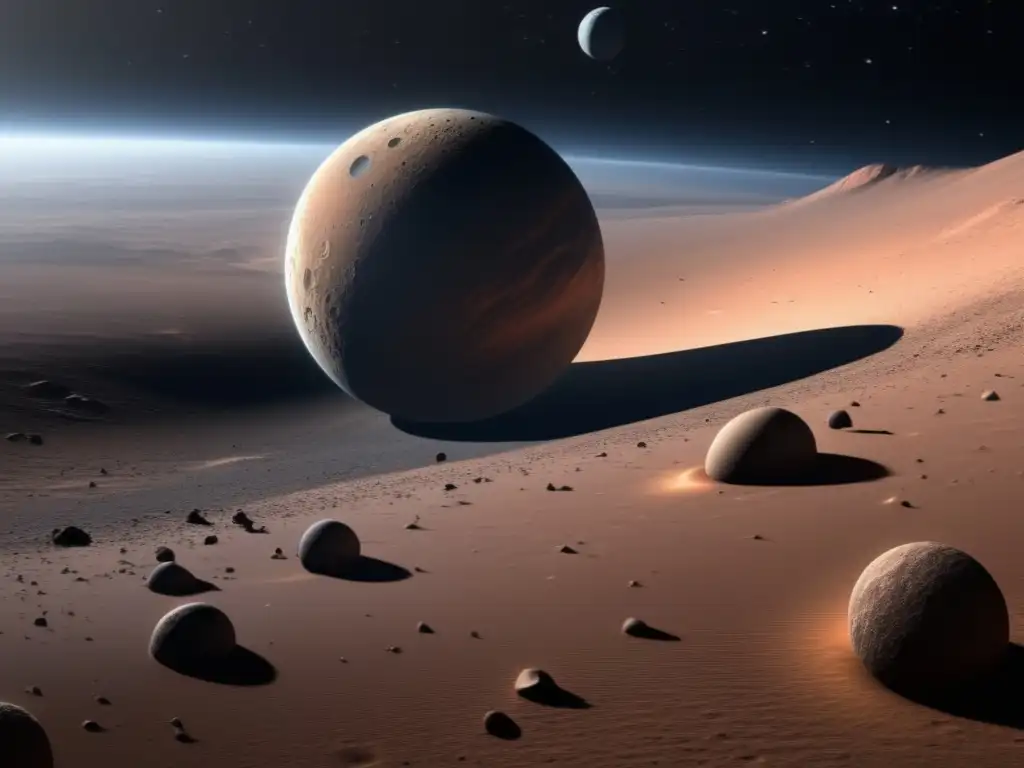The Epic Discovery Of Quaoar In The Kuiper Belt

Introduction
The discovery of asteroids in our solar system has been ongoing for centuries, and with each new discovery, we gain a deeper understanding of our universe. One such asteroid that has captured the attention of scientists and enthusiasts alike is Quaoar, located in the Kuiper Belt. This trans-Neptunian object was discovered in 2002 by astronomers Chad Trujillo and Michael Brown, and it has since been the subject of intense study. In this article, we will explore the epic discovery of Quaoar in the Kuiper Belt and what it means for the scientific community.
Quaoar: The Facts

Size and Composition
Quaoar is a dwarf planet with an estimated diameter of around 560 miles, making it one of the largest known trans-Neptunian objects. It has a reddish hue and is composed of a mixture of rock and ice, similar to other icy bodies in the Kuiper Belt.
Orbit and Location
Quaoar is located in the Kuiper Belt, a region beyond Neptune that is home to thousands of icy objects. Its orbit takes approximately 288 years to complete, and it ranges from 6.5 billion kilometers at its farthest point to 6.2 billion kilometers at its closest point to the sun.
Name and Mythology
Quaoar is named after a creation deity of the Tongva people, a Native American tribe indigenous to the Los Angeles area. Quaoar is said to have created the earth and all living things in Tongva mythology. Its discovery also marked the first time a Native American deity was used to name an astronomical object.
The Discovery of Quaoar

The Search for the 10th Planet
The discovery of Quaoar was part of a larger effort by astronomers to locate a tenth planet in our Solar System. Pluto, previously thought to be the ninth planet, had been demoted to a dwarf planet in 2000, leaving open the possibility of another planet beyond Neptune. This led astronomers Chad Trujillo and Michael Brown of the California Institute of Technology to begin a search for large objects beyond Pluto.
The Telescope Observations
Trujillo and Brown used the Palomar Observatory in California to search for potential candidates for the tenth planet. They took images of the sky over several nights and compared them to look for moving objects. Quaoar's slow movement through the sky made it difficult to spot, but after multiple observations on several different nights, the object's movement was finally confirmed.
The Announcement and Impact
After the discovery of Quaoar was confirmed, Trujillo and Brown announced it to the world on October 7, 2002. The discovery made headlines globally and caused excitement among scientists and space enthusiasts alike. Quaoar's discovery marked the largest object found in the Solar System since Pluto's discovery in 1930.
What Quaoar's Discovery Means for Science

Further Understanding of the Kuiper Belt
Quaoar's discovery has helped scientists gain a deeper understanding of the Kuiper Belt and its composition. Its reddish hue suggests that it may have formed in a different region of the Kuiper Belt than other objects with a bluer tint. Studying the composition of Quaoar can help us gain insight into how the Kuiper Belt formed and evolved over time.
Reclassifying Pluto and Other Dwarf Planets
The discovery of Quaoar and other similarly sized objects in the Kuiper Belt has led to a reclassification of Pluto and other dwarf planets. These new discoveries have increased our understanding of the characteristics that define a planet, leading to the creation of the term "dwarf planet." Quaoar's discovery also highlights the importance of studying these smaller bodies in our Solar System.
Frequently Asked Questions

-
What is Quaoar?
Quaoar is a dwarf planet located in the Kuiper Belt.
-
Who discovered Quaoar?
Quaoar was discovered by astronomers Chad Trujillo and Michael Brown in 2002.
-
Why is Quaoar significant?
Quaoar's discovery marked the largest object found in the Solar System since Pluto's discovery in 1930. It has also helped scientists gain a deeper understanding of the Kuiper Belt and its composition.
-
What is the Kuiper Belt?
The Kuiper Belt is a region beyond Neptune that is home to thousands of icy objects.
-
Why was Quaoar named after a Native American deity?
Quaoar is named after a creation deity of the Tongva people, a Native American tribe indigenous to the Los Angeles area. Its discovery marked the first time a Native American deity was used to name an astronomical object.
Conclusion
In conclusion, the discovery of Quaoar in the Kuiper Belt has been an epic journey for scientists and enthusiasts alike. Its discovery has helped us gain a deeper understanding of our Solar System and the Kuiper Belt, and has led to a reclassification of what defines a planet. Quaoar's mythological namesake and its significance in Native American culture adds another layer of depth to its discovery. We can only hope that future discoveries in the vast expanse of space will continue to captivate our imaginations and expand our understanding of the universe.
Thank you for reading! Don't forget to share your thoughts and interact with the Asteroid Realm community.
Additional Resources

- NASA's In-Depth Information on Quaoar
- Space.com's Article on Quaoar
- Space.com's Article on Quaoar's Discovery
 The Discovery Of Asteroid 1997 XF11: A False Alarm
The Discovery Of Asteroid 1997 XF11: A False Alarm The Elusive 3753 Cruithne: Earth's Second Moon?
The Elusive 3753 Cruithne: Earth's Second Moon? The Intriguing Tale Of Asteroid 2002 AA29
The Intriguing Tale Of Asteroid 2002 AA29If you want to discover more articles similar to The Epic Discovery Of Quaoar In The Kuiper Belt, you can visit the Asteroid Discoveries category.
Leave a Reply

Articulos relacionados: